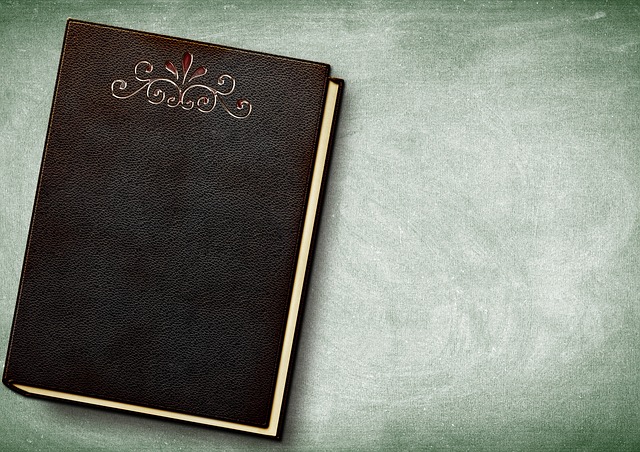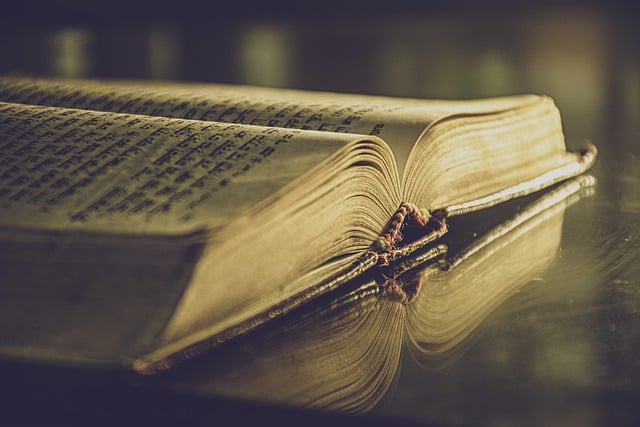Today we are going to talk about Book Royalties because if you are an author then this is a very important topic for you. There are a lot of misconceptions regarding book royalties and today we are going to dispel them once and for all. So, let us begin this blog wi mnth the very simple question of what is a book royalty.
WHAT IS A BOOK ROYALTY?

Source: https://shorturl.at/hETV9
A book royalty is the money that the author gets from the publisher. It is the compensation the author gets for writing the book and allowing the publisher to publish it. This money is calculated based on the number of sales of that book. This money is calculated in terms of percentage and is a percentage of the net revenue the book generates on each sale. While it is impossible to predict the total profits of a book but the percentage can be negotiated before the book goes into publishing.
The better the percentage the more money the author can make. This percentage calculation is based on a lot of factors and sometimes these factors can be predetermined. The percentage you are going to get can depend on factors such as the type of book as well as the format of the book. Royalty percentage can even change depending upon sales milestones. This is when the royalty percentage is increased when the book makes a certain number of sales. Royalty percentage can also be different for the same book for national and international markets.
One of the misconceptions is that royalty payments are made every time a book is sold but that is not the case because royalty payments are made annually or perhaps monthly or even weekly in rare cases. There are several other factors regarding royalties and we are going to talk about them moving forward.
HOW EXACTLY DO BOOK ROYALTIES WORK?
ROYALTY RATE

In order to understand how royalties work, you need to understand the royalty rate. This is the rate or percentage of the book’s net revenue. The author receives this revenue as compensation for their work. This rate can be negotiated by the author and the better the percentage the more money the author can make. This rate is usually calculated before the book goes into publishing and this rate is not a verbal contract but it is a signed publishing contract.
NET REVENUE CALCULATION

When we talk about a net revenue calculation it is actually very simple to do. Net revenue is calculated after subtracting a lot of things. Certain things such as expenses and manufacturing costs are subtracted from the gross revenue to find the net revenue. Other things such as discounts and allowances for unsold books are also subtracted. When the net revenue is calculated, the author gets their royalty based on the percentage of the net revenue.
SALES REPORTING
Sales reporting is an important part of royalty calculation because sales revenue will help the author understand an estimate for their royalties. That is why established publishers like ours at Orange Publishers always provide sales reports and statistics to our esteemed authors. This includes detailed sales analysis of the books sold in all types of formats along with details about sales channels. Sales reports go out annually or monthly or anything in between.
After all the calculations are done, the royalty calculation can take place with the help of sales data. After which the royalty payments are made to the authors along with royalty statements that have a simple breakdown of the payments.
Why Isn't My Book Selling?
WHAT ARE THE TYPICAL RATES FOR BOOK ROYALTIES
TRANSITIONALLY PUBLISHED BOOKS
1. HARDCOVER EDITION

While it is true that established authors can get better royalty percentages but when it comes to hardcover edition books the royalty percentage is between 10% to 15%. This rate can vary depending upon the region of the world as well as the author’s negotiation powers and much more.
2. PAPERBACK EDITION

Paperback editions usually have lower rates of royalty compared to hardcover editions. Paperback edition books have royalty rates that range between 6% to 10%. These rates are also influenced by the reputation of the author as well as their power of negotiation.
3. E-BOOK EDITION

Since eBooks do not have a large manufacturing cost this means that the revenue is always greater when it comes to eBooks. eBooks can be recreated in the millions without spending a single rupee which is why the net revenue is also greater. This is because there is not much to subtract from total revenue. That is why we can expect anywhere between 25% to 40% when it comes to eBooks. One of the best royalty rates in the industry.
SELF-PUBLISHED BOOKS

When it comes to self-published books, the royalty calculation is a little bit different. This is because royalty rates are not calculated the same in traditional publishing. When it comes to self-publishing, the author is the publisher and invests in the publishing process. That is why the author can expect very high rates of royalty because they are also an investor in the book. While rates change depending on several factors but we can estimate anywhere between 60% to 80% of the retail price.
HYBRID-PUBLISHED BOOKS

Hybrid publishing is a very new concept and it is the combination of both traditional publishing and self-publishing. This is when the other can invest in the book but does not have as much control as with self-publishing. This is a very good option for authors because they do not have to invest a lot into the book and they can expect very good royalty rates that are better than traditional publishing. When we talk about hybrid published books, the royalty rate can fluctuate between 10% to 20% when it comes to printed editions. eBooks will have better rates as usual.
HOW LONG DO BOOK ROYALTIES LAST?
COPYRIGHT
Royalties can last as long as there is a copyright protection for the book. If a book is published under the name of an author, then that author has exclusive rights to the book’s royalties. If there is no pre-determined term of contract then the author is liable to royalty payments till they have copyright over the work. However, that is only possible when the author has the rights to their book and has given the publisher special right to exclusively publish the book. Most of the time the copyright of a book is active even after the author’s death.
CONTRACTUAL TERMS
One of the ways to determine how long royalties can last is to simply find out if there are any contractual terms. If the author and the publisher have agreed to royalties for a certain period of time then the author is going to get royalties only for that. The royalty payments will stop after those fixed number of years as specified in the contractual term. The contract can even say that the author will receive a royalty for the entire duration of their copyright holding.
OUT-OF-PRINT CLAUSE
There is usually an out-of-print clause when publishing contracts are signed and this out-of-print clause is simple to understand. It is when the book is no longer in print because of little or no sales or because of the unavailability of the book from the market. The book is simply out of print. When that happens, the book’s author gets back all the exclusive publishing rights and that is also why they stop getting royalty payments from the initial publisher.
RENEWAL OR REVERSION RIGHTS
The present royalty rates and royalty payments can stop because it is put on hold until new negotiations for new royalty rates are done. This is usually done after a certain period and it is usually done after certain sales milestones are reached. That is when we can expect the current royalties to end so that the new royalty rate can be initialized.
DO I HAVE TO PAY TAXES ON MY BOOK ROYALTIES?
INCOME TAX
The money earned from royalty is considered income and that is why you must have to pay income tax in India. The money that you earn from taxes is categorized as “Income from Other Sources”. This is in accordance with Indian Income Tax Act.
TAX DEDUCTIONS
While authors will have to pay tax on their income generated from royalty but here is some good news. They can even claim some tax deductions if they are self-publishing their book. That will mean that they are also investing in production and promotion as well as marketing. This will open the doors for claiming tax deductions. The best thing to do about this is to consult your accountant regarding taxation.
TAX TREATY
You will be under Indian tax laws if your book is only sold in India and if the publisher is Indian. However, if you receive your royalties from any foreign publisher then things can become complicated. That is when you will be taxed under the tax treaty. Tax treaties are treaties and agreements signed and agreed upon by two nations and this treaty will be applicable to your nation and the foreign country of publishing.
WHAT IS AN ADVANCE?
An advance is a pretty simple concept in the world of publishing and it is to do with supporting the author in their writing career. This is because it can take a lot of time for the book to get finalized and for it to start publishing. Then again it can take a lot of time between publishing and receiving royalties. That is why an advance payment can be made to the author after estimating and calculating their royalty in order to support them.
However, it is important to understand that this is a rare occurrence because advances, in reality, are only given to popular authors. Publishers can only predict good performance from authors who have performed well in the past. An advance is not a bonus and it is nothing but an advance payment of royalty. If an author is paid an advance, then the subsequent royalties are paid to them after deducting the advance.
While it is common for the publisher to pay the author in advance before sales begin but there can be exceptions. Sometimes advances are paid after the publisher monitors the sales and the growth of the sales which will help them predict future performance thereby making advance calculation easier.
EXAMPLE OF BOOK ROYALTIES WITH AN ADVANCE

Let us look at a very simple example. Let’s say an author has signed a contract with a traditional publisher and the publisher has advanced ₹ 1,00,000.
Now let us assume that the agreed-upon royalty percentage between the author and the publisher is 10%. And the net revenue of the book is ₹ 10,00,000.
That is why in order to calculate the royalty of the author with simply need to multiply the net revenue by the percentage of royalty. The answer we get is ₹ 1,00,000.
Now let us remember the amount that had been paid upfront as an advance during book signing as the royalty which was ₹ 1,00,000. And the amount that needs to be paid on royalty is ₹ 1,00,000. That makes the advance balance zero because the royalty that the author deserves has already been paid in advance. Which means the publisher does not need to pay any additional royalty on that book.
However, if the book makes any more sales in the next quarter or the next year then since the advance balance is zero which means that the publisher has to pay royalties at 10% again.
The simple meaning behind all these calculations is that the publisher does not need to pay any royalty as long as the royalty is below the prepaid amount of advance. It has already been paid by the publisher. When the book starts earning more money than the advance paid royalty, then the publisher has to pay the additional royalty.
WHAT HAPPENS IF MY BOOK SELLS FOR MORE THAN ITS LIST PRICE?
Before we talk about what is going to happen with the royalty agreement if the book sells for more than the list price, let us talk about the list price. The list price is the MSRP of your book. It is the printed price and some royalty agreements are calculated on the list price rather than the actual sales price.
If that is the case with you that you have agreed to get royalties on the list price but the book is actually selling for more then there are certain things you can do. You will definitely have a clause in the contract where there will be mention of such cases. When things like this usually happen, the author and the publisher usually sits down and agrees on a new royalty percentage.
If you do not want to get into all these calculations then you can agree with the publisher to get royalty payments that are based on the actual price.
WHAT FACTORS AFFECT THE AMOUNT OF BOOK ROYALTIES AN AUTHOR RECEIVES?
There are several factors that can affect the amount of book royalties that you can receive as an author. It can even be the case that these factors will work in combination and that can fluctuate the amount of book royalties. Let us look at these factors.
BOOK FORMAT
This can have a profound impact on the royalty rate because there are different preset percentages of royalty in the publishing industry. These rates are different for hardcovers, paperbacks or ebooks or other types of books.
SALES VOLUME
The better the book performs the more royalties you are going to get and that is why sales volume is a very big factor in royalties. This is simple to understand because the more books you sell the more royalties you are going to get.
ADVANCES
If you have already been paid an advance by the publishing company then that can affect your royalty payments later on. This is because the amount of the advance will be deducted from all the royalties you have earned and only after the advance amount has been covered will you get new royalties.
LOCATION
Location is a big factor when it comes to royalty calculation. This is because prices are different for different countries the book is sold. Along with that, we come to market differences because a good market will have better royalty rates and a very stagnant market will not have good royalty rates.
HOW MUCH ROYALTY FOR A BOOK IN INDIA?

While we can of course talk about royalty rates in India but then again it will not be very worthwhile for you. This is because the royalty rates that we have mentioned above are very similar to the royalty rates in India. Even after there is similarity, we can find huge differences when it comes to publishers and markets. Different markets prefer different kinds of books and different countries prefer different kinds of books. This means a particular kind of book might be popular now and might not even be on the bookshelf next year. That is why a very customized royalty calculation is agreed upon between the authors and the publishers. It is impossible to guess that.
DO AUTHORS PAY ROYALTIES?
Authors do not pay royalties. The entire concept of royalty payment is there so that authors can get paid by publishers to publish their work. However, authors might need to pay additional people such as editors and cover designers and marketing services but those are not considered royalties. In order to understand that you simply have to understand the definition of a royalty which is compensation by the publisher to the author.
DO FIRST-TIME AUTHORS GET ROYALTIES?
It does not matter if you are a first-time author because if you are writing under your own name then you are eligible for royalties. If you are publishing under a traditional publisher with a publishing contract to share profits then that is your royalty.
WHEN DOES AMAZON PAY BOOK ROYALTIES?
Amazon usually pays a royalty after 60 days of the end of the calendar month when the realities start on a particular book. The reason why there is a delay for this is simply because of adjustments and returns as well as verification of sales and all the calculations. There can be other parts of the agreement such as a minimum balance that needs to be accumulated so that authors can start getting payments. It is different for each country Amazon operates in.
It is very easy to understand the royalty calculation at Amazon because the sales reporting at Amazon is very good and will allow you to track everything about the book sales.
WHAT HAPPENS TO BOOK ROYALTIES WHEN YOU DIE?
You can expect royalty payments till the time your copyright is standing which is usually a few decades after your death. When you are signing the book contract you can also sign your succession contract. This will help you set a nomination and that person will receive your royalty payment after your death. This is just like something that happens at a bank and this is very organized. The right to book royalty is passed down from the author to their successors in the event that they did not make a succession contract.
We hope this blog has been helpful for you to understand what are book royalties and how they work. This might seem complicated because they can be complicated with other publishers. But you do not need to worry about royalty payments with us at Orange Publishers. We are the fastest-growing and most popular publishing company in India with the best royalty payment structure that is organized and simple to understand. Our authors are our priority and we are very flexible when it comes to royalty agreements so that our authors are satisfied at all times.
We are one of the few publishing companies that are fully equipped to do everything in-house. Everything from the planning to the illustrations and the printing as well as the publishing is done in-house at Orange Publishers. We even take care of copyright issues so that our authors can only concentrate on what they do best which is writing. We welcome you to check out our amazing services and we welcome you here to the Orange Publishers family where everything is possible.










